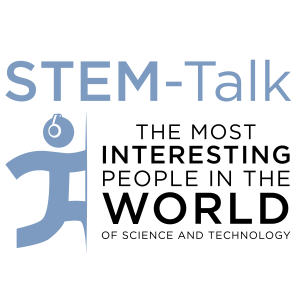
Episode 53: Brian Caulfield on wearable technologies and the potential of electrical muscle stimulation
 2017-12-19
2017-12-19
Download
Right click and do "save link as"
Today’s interview is with Dr. Brian Caulfield, the dean of physiotherapy at the University College Dublin, where he also is one of the directors of Ireland’s largest research center, the INSIGHT Center for Data Analytics.
Brian is especially known for the work he is doing with wearable and mobile sensing technologies and how their use is opening new avenues for human performance evaluation and enhancement in areas like elite sports to rehabilitation medicine to gerontology. He also is a leader in the use of electrical muscle stimulation, also known as EMS, which is being used in health and sports.
Brian also is the principal investigator in Ireland’s industry-led Connected Health Technology Center and is the overall project coordinator for the Connected Health Early Stage Researcher Support System, which is Europe’s first networked Connected Health PhD training program.
Brian graduated with a bachelor’s Degree in Physiotherapy, a master’s in Medical Science, and a PhD in Medicine from the University College of Dublin. He has co-authored more than 180 research publications and six patents. He also has supervised more than 30 master’s of science graduate research and PhD projects to completion.
Brian was the recent recipient of the prestigious 2017 University College Dublin Innovation Award, which recognized his work in the development of a connected health ecosystem in Ireland.
Show notes:
3:52: Brian talks about growing up in Dublin and how he dreamed of becoming a professional athlete rather than a scientist.
4:35: Brian explains that as a kid he started noticing on TV how a couple of therapists would run onto the soccer field whenever a player was injured. That’s what first gave him the idea of going into physical therapy.
6:08: After receiving his physical therapy degree from the University College of Dublin, Brian tells the story of how he was about to leave for a job in Chicago when the director of the university lab offered Brian a job as a research assistant, which led him to stay in school and pursue a master’s degree.
8:02: Dawn asks Brian what it was like as a 21-year-old to work in a lab side by side with biomedical engineers and scientists on a project that looked at how reflex excitability is modulated throughout the different phases of the walking cycle in stroke patients when compared to patients who have a healthy gait.
11:45: Ken asks Brian what it was like to work in the United States after receiving his master’s degree.
13:30: Dawn asks Brian about returning to Dublin to work on a doctorate and his decision to focus his research on ankle sprains, which is one of the most common non-contact injuries suffered across all sports.
18:04: Brian talks about the limitations of studying athletes in the laboratory and how accelerometers made it possible to do research in the field.
20:57: Dawn asks Brian to expand on how his collaboration with biomedical engineers and computer scientists enabled them to develop wearable accelerometers and sensors to measure human movement.
23:34: Ken asks how this technology, which was developed to improve athletic performance, led to other technologies that were applied to accessing older adults who are at risk of falls.
27:24: Dawn points out that it was this research that led Brian to be named the University College Dublin's site director for the Insight Center, which is one of Europe's largest data analytics research organizations with more than 450 researchers. Dawn asks Brian to talk about Insight and its structure and purpose.
29:26: Dawn talks about how much fun it was using inertial measurement units, known as IMUs, during an undersea mission with NASA to assess the technology’s future use in looking at astronaut vestibular function on return to Earth. She then asks Brian to talk about other potential clinical and fitness applications when using IMU technology?
32:11: Dawn asks Brian to talk about his recently published st...
view more
More Episodes
012345678910111213141516171819
Create your
podcast in
minutes
- Full-featured podcast site
- Unlimited storage and bandwidth
- Comprehensive podcast stats
- Distribute to Apple Podcasts, Spotify, and more
- Make money with your podcast
It is Free
- Privacy Policy
- Cookie Policy
- Terms of Use
- Consent Preferences
- Copyright © 2015-2024 Podbean.com



